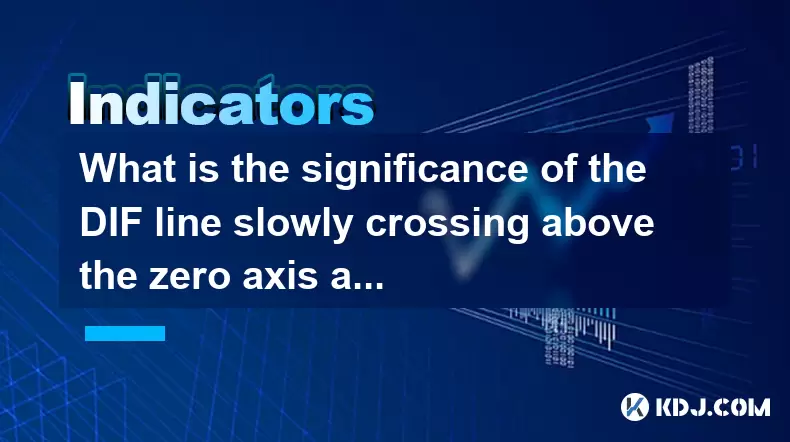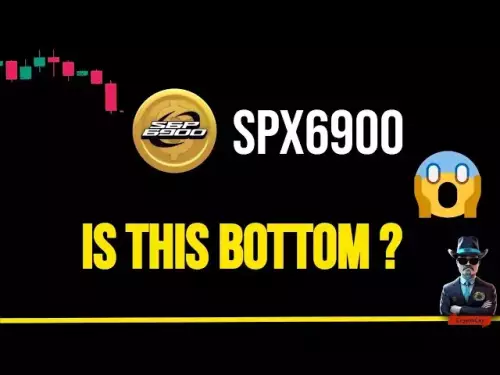-
 Bitcoin
Bitcoin $112600
-2.20% -
 Ethereum
Ethereum $4774
0.35% -
 XRP
XRP $3.032
0.12% -
 Tether USDt
Tether USDt $1.000
0.08% -
 BNB
BNB $867.7
-1.75% -
 Solana
Solana $204.9
0.39% -
 USDC
USDC $1.000
0.01% -
 Dogecoin
Dogecoin $0.2339
-1.38% -
 TRON
TRON $0.3645
0.88% -
 Cardano
Cardano $0.9223
1.03% -
 Chainlink
Chainlink $25.91
-0.85% -
 Hyperliquid
Hyperliquid $45.54
1.73% -
 Sui
Sui $3.698
-0.53% -
 Stellar
Stellar $0.4117
-0.92% -
 Ethena USDe
Ethena USDe $1.001
0.02% -
 Bitcoin Cash
Bitcoin Cash $590.7
0.30% -
 Avalanche
Avalanche $25.74
-0.77% -
 Hedera
Hedera $0.2534
0.31% -
 Litecoin
Litecoin $120.7
-0.20% -
 UNUS SED LEO
UNUS SED LEO $9.580
-0.17% -
 Toncoin
Toncoin $3.331
-1.54% -
 Shiba Inu
Shiba Inu $0.00001303
-2.00% -
 Uniswap
Uniswap $11.09
-2.63% -
 Polkadot
Polkadot $4.131
-2.27% -
 Dai
Dai $1.000
0.01% -
 Aave
Aave $352.2
-0.77% -
 Bitget Token
Bitget Token $4.678
-0.53% -
 Cronos
Cronos $0.1578
0.84% -
 Monero
Monero $279.7
5.32% -
 Ethena
Ethena $0.7000
-6.27%
What is the significance of the DIF line slowly crossing above the zero axis after a MACD bottoming divergence?
A MACD bottoming divergence followed by a slow DIF line crossover above zero signals strong bullish reversal potential in crypto, especially when confirmed by volume and price patterns.
Aug 11, 2025 at 04:07 am

Understanding MACD and Its Core Components
The MACD (Moving Average Convergence Divergence) is a widely used technical indicator in cryptocurrency trading that helps traders identify trend direction, momentum, and potential reversal points. It consists of three primary elements: the DIF line, the DEA (Signal) line, and the MACD histogram. The DIF line is calculated by subtracting the 26-period Exponential Moving Average (EMA) from the 12-period EMA of the asset’s price. This line reflects the short-term momentum relative to the longer-term trend. When analyzing market conditions, the position of the DIF line in relation to the zero axis carries significant interpretive weight. A DIF line crossing above the zero axis suggests that short-term momentum has overtaken long-term momentum, signaling a shift from bearish to bullish sentiment.
Defining MACD Bottoming Divergence
A MACD bottoming divergence occurs when the price of a cryptocurrency makes a lower low, but the MACD indicator forms a higher low. This scenario indicates weakening downward momentum despite the price continuing to fall, hinting at a potential reversal. Traders interpret this as a sign that selling pressure is diminishing and that buyers may soon regain control. For example, if Bitcoin drops to $30,000 and then later to $28,000, but the MACD histogram or DIF line shows less negative momentum during the second drop, this forms a bottoming divergence. The presence of this divergence alone does not confirm a reversal, but it increases the probability when combined with other confirming signals, such as volume spikes or candlestick patterns.
Interpreting the DIF Line Crossing Above Zero Post-Divergence
When the DIF line slowly crosses above the zero axis following a confirmed MACD bottoming divergence, it reinforces the likelihood of a sustained bullish reversal. This movement indicates that the short-term EMA (12-period) has finally risen above the long-term EMA (26-period), confirming that upward momentum is not only present but gaining structural strength. The term “slowly” is critical—it suggests a gradual build-up of buying pressure rather than a sharp, potentially unsustainable spike. This gradual transition reduces the risk of a false breakout and increases confidence in the emerging uptrend. In the context of volatile assets like cryptocurrencies, a slow zero-axis crossover after divergence can signal a more reliable foundation for long positions.
Practical Steps to Identify and Confirm the Signal
To effectively use this signal in trading, follow these detailed steps:
- Apply the MACD indicator to your cryptocurrency chart (e.g., on TradingView or Binance). Default settings are typically 12, 26, and 9 for the DIF, DEA, and histogram.
- Identify a price low followed by a subsequent lower low, ensuring the corresponding MACD forms a higher low—this confirms the bottoming divergence.
- Monitor the DIF line as it approaches the zero axis from below. Use horizontal lines or visual markers to track its trajectory.
- Wait for the DIF line to cross above zero. Do not act on proximity—only confirm the actual crossover.
- Check for additional confirmation, such as rising trading volume, bullish candlestick patterns (e.g., engulfing or hammer), or support from key moving averages like the 50-day or 200-day EMA.
- Enter a long position after the crossover is complete and confirmed by at least one additional factor to reduce false signals.
This process ensures a disciplined approach, especially important in crypto markets where whipsaws and fakeouts are common.
Historical Examples in Cryptocurrency Markets
In early 2023, Ethereum exhibited a clear MACD bottoming divergence during its drop to $1,550. While the price made a lower low compared to its previous low at $1,600, the MACD formed a higher low, indicating weakening bearish momentum. Over the next several days, the DIF line gradually ascended toward the zero axis. When it finally crossed above zero, accompanied by increased buying volume and a close above the 50-day EMA, it marked the beginning of a sustained rally to $2,100. Similarly, Binance Coin showed a comparable pattern in late 2022 after a prolonged downtrend. The slow DIF crossover above zero post-divergence coincided with a breakout from a descending wedge pattern, validating the reversal. These cases illustrate how the combination of divergence and zero-axis crossover can precede meaningful upward moves.
Risks and Limitations of the Signal
Despite its reliability, the DIF line crossing above zero after a bottoming divergence is not infallible. In highly volatile crypto markets, price can retest support levels or enter consolidation phases even after the crossover. For instance, Solana displayed a textbook divergence and zero-axis crossover in mid-2023, yet the price stalled for weeks in a tight range before resuming upward. Traders who entered immediately may have faced drawdowns. Additionally, low liquidity coins may generate false divergences due to manipulative trading or thin order books. It is crucial to assess the broader market context—such as Bitcoin’s trend or macroeconomic factors—before acting solely on this signal. Risk management, including stop-loss placement below the recent swing low, remains essential.
Frequently Asked Questions
What timeframes are most reliable for observing this MACD signal in crypto trading?
The daily and 4-hour charts are most effective for identifying meaningful MACD bottoming divergences and zero-axis crossovers. Shorter timeframes like 5-minute or 15-minute charts generate too many false signals due to noise, while weekly charts may delay entries. The daily chart balances signal reliability with timely execution.
Can this signal be automated using trading bots?
Yes, many algorithmic trading platforms allow coding conditions for MACD divergence detection and DIF line zero-axis crossover. However, accurately programming divergence requires comparing price swing lows with corresponding MACD values, which involves peak detection logic. Traders must backtest thoroughly, as bots may misinterpret minor fluctuations as valid divergences.
Does the slope of the DIF line matter after crossing zero?
Yes, a steeper slope indicates stronger momentum acceleration, while a flatter ascent suggests cautious buying. A steep rise post-crossover often correlates with breakout volume and can precede rapid price increases. Conversely, a shallow slope may indicate sideways movement ahead.
How does this signal perform in ranging versus trending markets?
In trending markets, the signal tends to be more reliable, especially at key support levels. In ranging markets, MACD often oscillates around zero, producing frequent crossovers that may lead to false entries. Filtering with volatility indicators like Bollinger Bands or ADX can improve accuracy.
Disclaimer:info@kdj.com
The information provided is not trading advice. kdj.com does not assume any responsibility for any investments made based on the information provided in this article. Cryptocurrencies are highly volatile and it is highly recommended that you invest with caution after thorough research!
If you believe that the content used on this website infringes your copyright, please contact us immediately (info@kdj.com) and we will delete it promptly.
- Rare Find: The 1-Cent Coin Worth €6,000!
- 2025-08-25 02:45:28
- Hacktivism, Tokenization, and the Decentralized Future: A New Yorker's Take
- 2025-08-25 02:45:28
- UNI Price Gears Up for New Cycle: Analyst Outlook Bullish
- 2025-08-25 02:50:11
- BlockchainFX, Polkadot, Stellar: Unveiling 2025's Crypto Opportunities
- 2025-08-25 03:25:27
- Pi Coin Price Patterns: Decoding the Hype and Reality
- 2025-08-25 03:30:12
- Pepe Crypto: Price Predictions and Long-Term Investment Potential - A NYC Perspective
- 2025-08-25 03:05:12
Related knowledge

What does it mean when the +DI and -DI cross frequently in the DMI indicator but the ADX is flattening?
Aug 11,2025 at 03:15am
Understanding the DMI Indicator ComponentsThe Directional Movement Index (DMI) is a technical analysis tool composed of three lines: the +DI (Positive...

What does the sudden appearance of a "dark cloud cover" candlestick pattern during an uptrend indicate?
Aug 13,2025 at 11:35am
Understanding the 'Dark Cloud Cover' Candlestick PatternThe dark cloud cover is a bearish reversal pattern in technical analysis that typically appear...

What does it mean when the moving average, MACD, and RSI all send buy signals simultaneously?
Aug 11,2025 at 01:42pm
Understanding the Convergence of Technical IndicatorsWhen the moving average, MACD, and RSI all generate buy signals at the same time, traders interpr...

What does it mean when both the KDJ indicator and the RSI show overbought signals simultaneously?
Aug 13,2025 at 11:35am
Understanding the KDJ Indicator in Cryptocurrency TradingThe KDJ indicator is a momentum oscillator derived from the Stochastic Oscillator, widely use...

What does it mean when the price is trading above the SAR indicator but the red dots are densely packed?
Aug 09,2025 at 11:49pm
Understanding the SAR Indicator and Its Visual SignalsThe SAR (Parabolic Stop and Reverse) indicator is a technical analysis tool used primarily to de...

What does it mean when the candlestick chart forms a "Morning Star" but trading volume is sluggish?
Aug 12,2025 at 06:28pm
Understanding the Morning Star Candlestick PatternThe Morning Star is a three-candle bullish reversal pattern commonly observed in cryptocurrency pric...

What does it mean when the +DI and -DI cross frequently in the DMI indicator but the ADX is flattening?
Aug 11,2025 at 03:15am
Understanding the DMI Indicator ComponentsThe Directional Movement Index (DMI) is a technical analysis tool composed of three lines: the +DI (Positive...

What does the sudden appearance of a "dark cloud cover" candlestick pattern during an uptrend indicate?
Aug 13,2025 at 11:35am
Understanding the 'Dark Cloud Cover' Candlestick PatternThe dark cloud cover is a bearish reversal pattern in technical analysis that typically appear...

What does it mean when the moving average, MACD, and RSI all send buy signals simultaneously?
Aug 11,2025 at 01:42pm
Understanding the Convergence of Technical IndicatorsWhen the moving average, MACD, and RSI all generate buy signals at the same time, traders interpr...

What does it mean when both the KDJ indicator and the RSI show overbought signals simultaneously?
Aug 13,2025 at 11:35am
Understanding the KDJ Indicator in Cryptocurrency TradingThe KDJ indicator is a momentum oscillator derived from the Stochastic Oscillator, widely use...

What does it mean when the price is trading above the SAR indicator but the red dots are densely packed?
Aug 09,2025 at 11:49pm
Understanding the SAR Indicator and Its Visual SignalsThe SAR (Parabolic Stop and Reverse) indicator is a technical analysis tool used primarily to de...

What does it mean when the candlestick chart forms a "Morning Star" but trading volume is sluggish?
Aug 12,2025 at 06:28pm
Understanding the Morning Star Candlestick PatternThe Morning Star is a three-candle bullish reversal pattern commonly observed in cryptocurrency pric...
See all articles

























































































